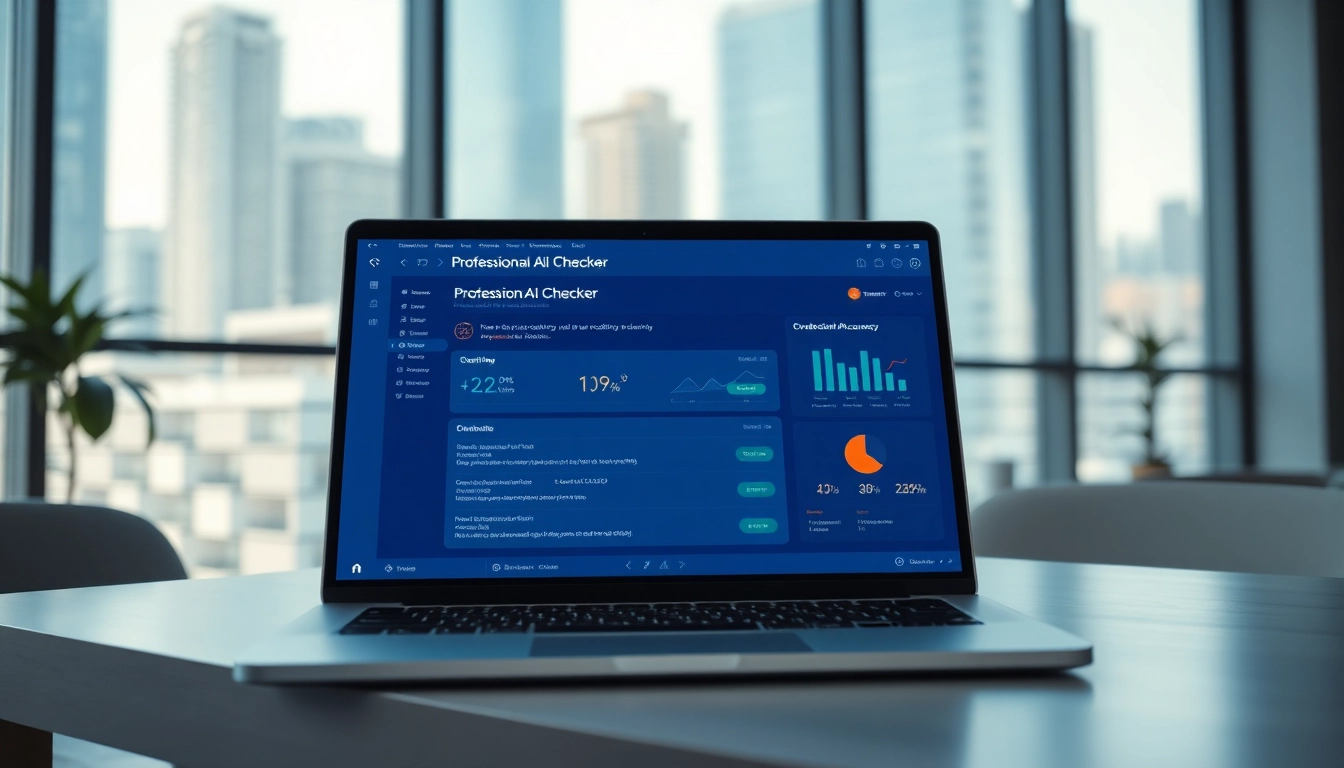Understanding AI Checkers
What is an AI Checker?
An AI checker is a specialized tool designed to analyze text and determine whether it is generated by artificial intelligence (AI) algorithms or written by humans. With the rapid advancements in AI technology, particularly in natural language processing (NLP) and machine learning, AI-generated text has become increasingly sophisticated. Consequently, the need for an effective ai checker is paramount for a variety of applications, ranging from academic integrity to content originality verification.
How AI Checkers Work
AI checkers employ algorithmic patterns and statistical analysis to identify features indicative of AI-generated content. These tools often leverage deep learning models that are trained on large datasets consisting of both human-written and AI-generated texts. By analyzing differences in sentence structure, vocabulary, coherence, and even emotional tone, AI checkers produce assessments about the likelihood that a given piece of text was produced by AI.
The core mechanisms include:
- Pattern Recognition: Identifying specific linguistic patterns typical of AI-generated text.
- Statistical Analysis: Evaluating word frequency and distribution to benchmark human versus robot-like writing styles.
- Contextual Understanding: Using NLP techniques to assess the coherence and contextual relevance of the content.
Common Applications of AI Checkers
AI checkers are increasingly utilized across various fields, including:
- Education: To detect instances of plagiarism and verify originality in student submissions.
- Content Creation: For marketers and writers to ensure the integrity and quality of their materials.
- Legal Documentation: To verify that contracts and legal materials are authored by humans, adhering to ethical standards.
- Technical Writing: To maintain clarity and authenticity in manuals, user guides, and technical specifications.
Benefits of Using an AI Checker
Improving Content Quality
Using an AI checker can significantly enhance the quality of written content. By identifying AI-generated sections, authors can make necessary adjustments to ensure their work meets authenticity standards. This quality check helps maintain readers’ trust and enhances the overall robustness of the content.
Saving Time and Resources
AI checkers can streamline the editing and review process, allowing content creators to save considerable time. By catching issues at the source, these tools reduce the need for extensive revision cycles, making workflows more efficient and productive.
Enhancing Academic Integrity
For educational institutions, maintaining academic integrity is essential. AI checkers help uphold honesty by ensuring that student submissions are genuine. This reduces instances of plagiarism and encourages original thought, which is crucial for a thriving academic environment.
How to Choose the Right AI Checker
Key Features to Look For
When selecting an AI checker, several key features should be evaluated:
- Accuracy: Choose tools with a proven track record of high detection rates for AI-generated content.
- User Interface: An intuitive interface makes it easier to analyze texts without a steep learning curve.
- Integration Capabilities: Look for checkers that can seamlessly integrate with your existing platforms (e.g., word processors, CMS).
- Multilingual Support: If your work spans multiple languages, find a checker that supports those variations effectively.
Comparing Popular AI Checkers
Not all AI checkers are created equal. Here’s an overview comparing some of the most widely recognized tools available:
- QuillBot AI Checker: Known for its user-friendly interface and robust analysis capabilities, QuillBot provides a free detection service with high accuracy.
- Grammarly AI Detector: A popular choice that combines grammar checking with AI detection features, making it a versatile option.
- Copyleaks: Offers advanced detection methods with over 99% accuracy, supporting numerous languages.
- Originality.ai: Focuses on protecting content creators from duplicity by accurately identifying AI-generated text.
User Reviews and Ratings
Before committing to a specific AI checker, potential users should consider exploring user reviews and ratings. These testimonials provide valuable insights into the user experience and effectiveness of each tool. Sites such as G2 and Trustpilot offer comprehensive peer reviews that can guide decision-making.
Integration of AI Checkers in Different Fields
Education and Academic Writing
In educational contexts, AI checkers are invaluable. They help ensure that students develop critical thinking and writing skills rather than relying solely on AI tools. Incorporating AI checkers into academic workflows also encourages students to engage more deeply with their subjects, fostering genuine learning.
Business Writing and Content Creation
Within the realm of business, effective communication is key. AI checkers enhance the credibility of marketing materials, reports, and internal documentation. By ensuring that content is original and tailored to its audience, businesses can strengthen their brand image and foster trust among stakeholders.
Legal and Technical Documentation
Accuracy is critical in legal and technical writing. AI checkers provide an additional layer of assurance, confirming that documents are appropriately authored and devoid of AI-generated inconsistencies. This is essential in preventing potential legal ramifications arising from misunderstandings or inaccuracies.
Future Trends in AI Checkers
Advances in AI Technology
As technology continues to evolve, AI checkers are also likely to advance, incorporating more sophisticated algorithms capable of better distinguishing between human and AI-generated writing. Expect improvements in contextual understanding, allowing for nuanced evaluations that go beyond surface-level analyses.
Ethical Considerations in AI Detection
The increasing use of AI checkers brings forth ethical considerations as well. Organizations and users must navigate potential biases in detection algorithms and ensure transparency. Furthermore, ethical implications concerning privacy and data security must be part of discussions regarding the use of these technologies.
The Role of AI Checkers in Creative Industries
The creative sector will likely see significant impacts from AI checkers. Writers, artists, and musicians may utilize these tools to ensure their creative expressions are uniquely theirs, sparking conversations about authorship and creativity in an AI-driven world. Furthermore, this could lead to new genres and styles of expression born from human-AI collaborations.



